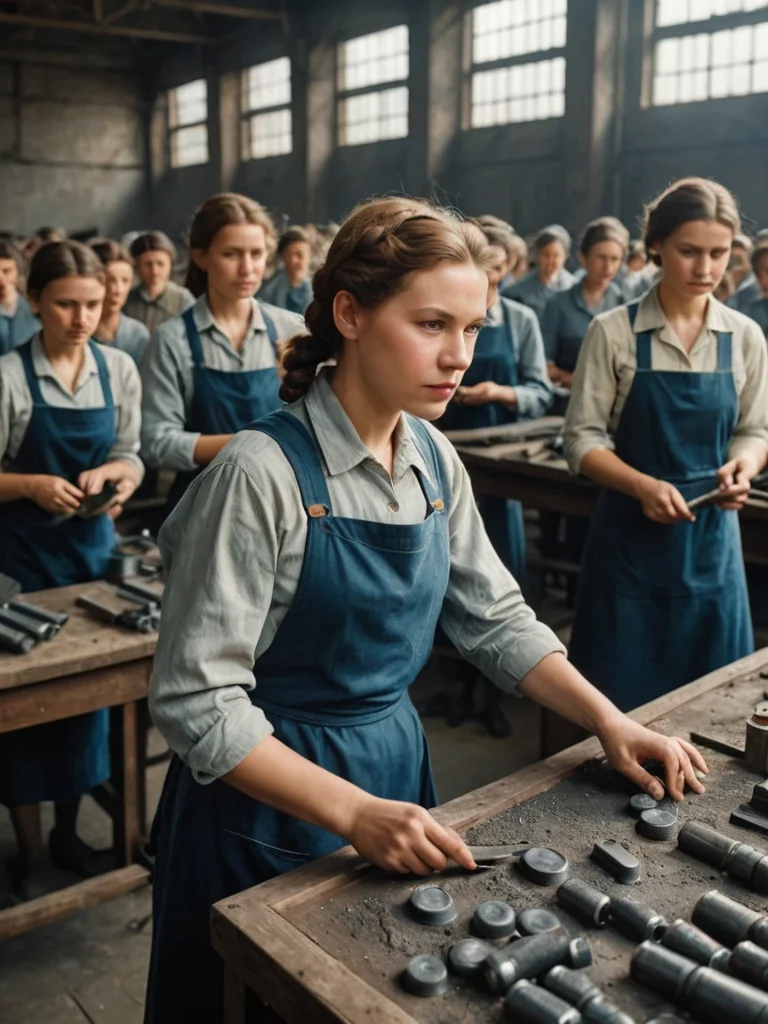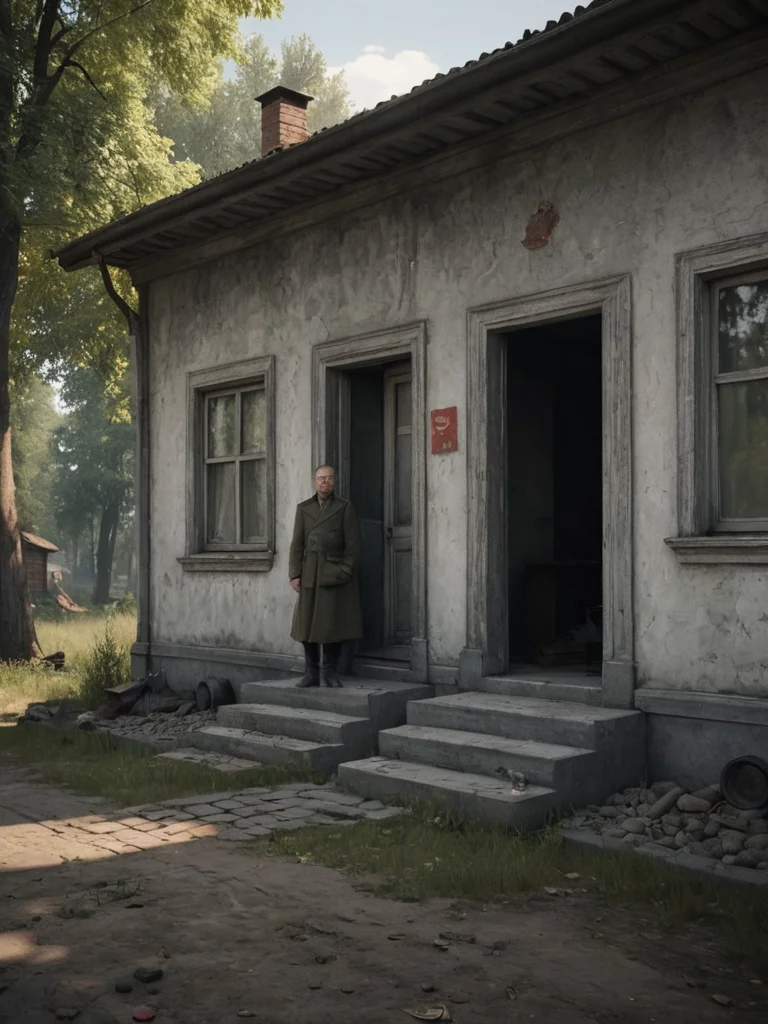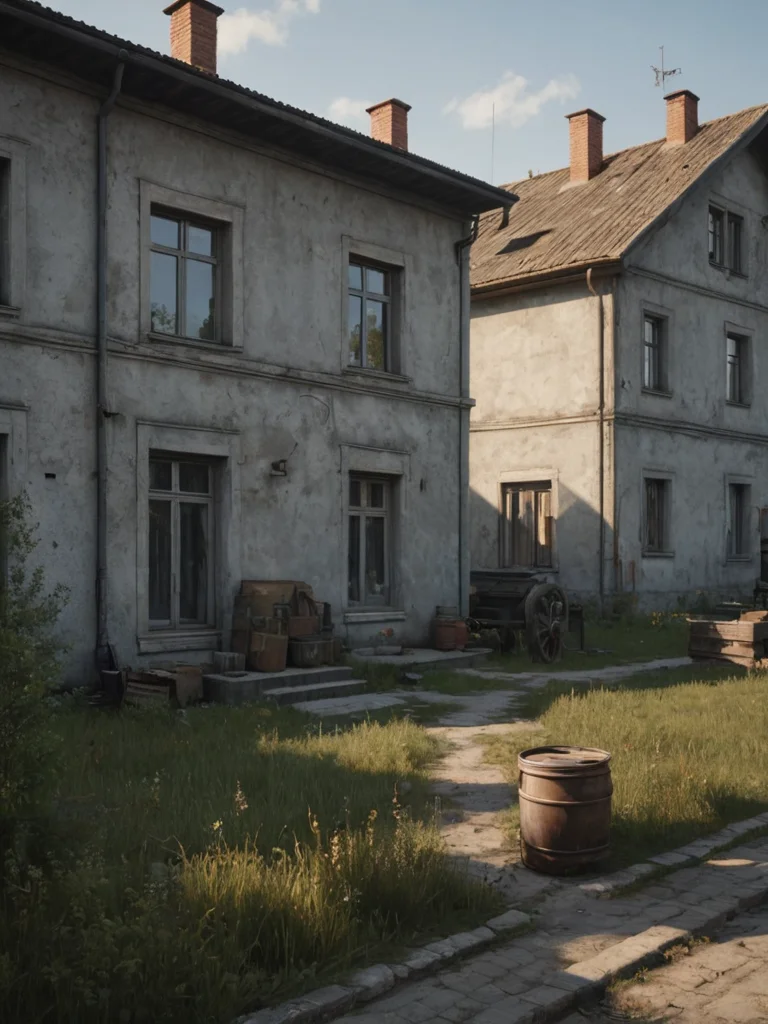The Great Patriotic War is a chapter of history that evokes deep and complex emotions in every resident of our country. In the minds of most people, the war is primarily associated with heroic deeds on the front lines, large-scale battles, and strategic operations. However, as historians note, Victory would have been impossible without the colossal efforts made by those who remained in the rear. Life in the Soviet rear during the war is a separate, less visible, but no less dramatic and heroic chapter. It represents a unique example of how, under conditions of total mobilization and severe shortages, in inhumane circumstances, millions of people continued to live, work, study, and believe in Victory, providing the front with everything necessary. Understanding this side of the war allows for a deeper appreciation of the true scale of the Soviet people’s feat.
It was a time when every person, young and old, felt part of a single whole, united by a common goal – to defend the Motherland from the enemy and crush Nazism. Adults and children, men and women, the elderly and teenagers – all contributed to the common Victory. It was their daily life, full of hardship but also unbroken spirit, that became the foundation on which the entire country stood. To fully appreciate this feat, it is necessary to delve into the details, to understand the difficulties people faced in the rear, how they overcame them, and what helped them maintain their humanity and hope during the darkest years.
Beyond the Front Lines: The Invisible Front of the Great Patriotic War
When the Great Patriotic War is mentioned, the imagination involuntarily conjures images of battles, tank attacks, air combat, and soldiers’ feats on the front line. However, as researchers emphasize, behind every bullet, shell, and bomb sent to the front, there was the titanic labor of millions of people who never saw the battlefield. These people, working in the rear, were no less fighters; their weapons were machine tools, shovels, needles, and typewriters. Their front was no less important than the front line, as they ensured the continuous supply of the army with everything necessary, maintained the country’s viability, and preserved faith in future Victory. Rear cities and villages, collective farms, and factories turned into vast workshops operating with unprecedented intensity.
In the very first months of the war, after the rapid advance of German troops, a significant part of the European territory of the USSR came under occupation. Many large industrial enterprises were evacuated to the east – to the Volga region, the Urals, Siberia, and Central Asia. This process, unprecedented in its scale and complexity, was carried out in the shortest possible time, under constant bombing and in conditions of acute resource scarcity. Factories, entire cities, were dismantled and transported thousands of kilometers, only to be reassembled, often in the open air, and immediately resume production. Workers, engineers, and their families moved with the equipment, leaving their homes and established lives to create new industrial centers in empty fields or on the outskirts of cities. This was a truly gigantic logistical and organizational task, accomplished with incredible selflessness.
Life in the rear became synonymous with the mobilization of all resources: human, material, and moral. Former housewives took to the machine tools, schoolchildren went to work in factories and collective farms, and the elderly took on the most difficult and responsible tasks. Production quotas increased, work shifts lasted 12-14 hours, often without days off. Vacations were canceled. In wartime, labor discipline was paramount, and any violation could be considered sabotage. Nevertheless, as numerous testimonies show, people worked not only out of fear but also out of a deep sense of responsibility and patriotism. They understood that every shell produced, every meter of fabric for soldiers’ uniforms, every ton of bread was a step towards Victory. This invisible front demanded no less courage and endurance from people than the battles on the front lines.
On the Brink of Survival: What They Ate, Where They Lived, and How They Dressed in the Rear
The daily life of a Soviet person in the rear was a brutal struggle for survival. Food, housing, and clothing – all became immense values that had to be fought for daily. The rationing system, introduced from the first days of the war, determined the norm of food consumption, which, by modern standards, was extremely meager. For example, depending on the category (workers, employees, dependents, children), people received a fixed amount of bread – the main food product. Bread, often with additives (oil cakes, bran, potato peels), was dark and heavy. Norms could range from 150-200 grams for dependents and children to 600-800 grams for heavy industry workers. Meat, sugar, fats, and grains were issued in even smaller quantities, and many products, such as milk, eggs, or fresh vegetables, practically disappeared from the diet of the urban population. People learned to show amazing ingenuity to diversify their meager menu and provide themselves with at least some food. Goosefoot, nettles, various wild herbs, and leftover fruits and vegetables were used. Gardening developed everywhere – every free patch of land, whether a yard, a school plot, or a city square, was turned into garden beds.
Housing conditions were also extremely difficult. With the outbreak of the war, many cities, especially in the west of the country, were subjected to destruction. Millions of people were evacuated to the east, which led to a sharp exacerbation of the housing crisis. New factories were being built, but there was a shortage of housing. Workers and evacuees were housed in dugouts, barracks, schools, clubs, sheds, and often simply in the open air until at least some temporary shelter could be built. In existing cities, communal apartments became overcrowded, with sometimes only a few square meters per person. Families lived in one room, sometimes sharing it with other residents. It was common for several families to occupy one room. Shortages of heat and water were common. Heating was wood- or coal-fired, and obtaining fuel was a huge problem, especially in winter. People gathered brushwood, dismantled old buildings, and used any available means for heating. The lack of proper sanitation, overcrowding, and insufficient food contributed to the spread of diseases, which became another trial for the residents of the rear.
Clothing and shoes were worth their weight in gold. Factories switched to producing military uniforms, and the civilian light industry practically stopped. It was almost impossible to buy new clothes, and there was no money for them. People wore old clothes, mended them endlessly, and remade clothes from deceased or grown-up children. The “fashion” of the war years was endless patches, refashioned coats, and women’s dresses remade from men’s. Shoes were repaired until nothing was left of them, and then replaced with homemade bast shoes or wooden clogs. Many walked barefoot or in heavily worn shoes even in cold weather. Children grew quickly, and their clothes couldn’t keep up, so it was common to see a child in ill-fitting clothes, often not their size. However, despite all the hardships, people tried to look neat, as much as possible. Maintaining their appearance was part of preserving human dignity and hope for the future.
Everything for the Front: How the Labor of Women, Children, and the Elderly Brought Victory Closer

With the start of the Great Patriotic War, men went to the front en masse. Their places in factories, collective farms, mines, on transport, in schools, and hospitals were taken by women, children, and the elderly. This unprecedented labor mobilization became one of the key factors that ensured Victory. Women, who before the war often managed households or worked in light industry, mastered male professions. They became turners, millers, welders, crane operators, tractor drivers, and miners. Many of them combined factory work with caring for children and managing households in conditions of total deficit and devastation. Women’s hands forged victory on par with men’s. There are stories of female Stakhanovites who exceeded quotas several times over, working 12-16 hours a day. They slept right at their machines to save time on commuting. Their selflessness and endurance were phenomenal.
The contribution of children and teenagers was no less significant. Thousands of schoolchildren left their desks and went to work at the machines, replacing their fathers and older brothers. Teenagers aged 12-14 worked alongside adults, often performing very difficult and physically demanding labor. They became apprentices in factories, assembled shells, sewed uniforms, and worked in the fields. In collective farms and state farms, children helped harvest crops, herd livestock, and cultivate land. They often worked without days off, receiving only meager rations or a few workdays for their labor. Children participated in collecting scrap metal, medicinal herbs, and warm clothes for the front. They performed for wounded soldiers in hospitals, wrote letters to the front, and worked as nurses. For many of them, childhood ended in one day – June 22, 1941. Their early maturity and labor feat continue to inspire admiration and the deepest respect.
Elderly people, despite their age and often poor health, also made a huge contribution to the common Victory. They passed on their experience to the youth, worked in administrative positions, raised children and grandchildren, and performed many other tasks that were vital for maintaining the rear. Grandmothers and grandfathers stood in lines for food, cooked meals, mended clothes, and cared for the wounded. In rural areas, they continued to work in the fields, replacing the men who had gone to the front, preserving the continuity of generations and supporting agricultural production. Their wisdom, experience, and patience were invaluable in a situation where the entire country was fighting for survival. This joint labor of all generations – women, children, and the elderly – became the true foundation on which the front stood, and without which Victory would have been impossible. They became the true heroes of the invisible front.
Despite Hardships: Culture, Education, and Spirit in the Wartime Rear

Despite the inhumane living and working conditions, Soviet society in the rear maintained an incredible strength of spirit, which manifested in the pursuit of culture, education, and the maintenance of morale. The party leadership and public organizations understood that cultural life and ideological work were crucial tools for mobilization and maintaining fighting spirit both at the front and in the rear. Cinemas, theaters, concert halls, libraries – anything that could distract from heavy thoughts and offer hope continued to operate, albeit on a much smaller scale. Front-line artist brigades were formed, which traveled to the front lines, but also continued to give concerts, hold lectures, and show films in rear cities. Patriotic films and songs were particularly popular, boosting morale and strengthening faith in Victory. For example, the song “Sacred War” became a true anthem of the struggle, and films like “Two Soldiers” or “Wait for Me” told stories of heroism and loyalty. These works of art served not only as entertainment but also as a powerful means of moral support.
The education system, despite enormous difficulties, continued to function. Many schools were evacuated, some buildings were used as hospitals or dormitories, but schooling did not stop. Teachers, often exhausted and hungry, continued to teach children, sometimes holding lessons in unsuitable premises, in cold classrooms, by the light of kerosene lamps. There was a shortage of textbooks and notebooks; people wrote on scraps of newspapers and packaging. The main task of education was not only to impart knowledge but also to foster patriotism, resilience, and faith in the future. Children, even while working in production, tried to find time for studies. Special evening schools were created for working youth. Universities and institutes also continued their work, training specialists so necessary for the country – engineers, doctors, teachers. Scientific research, especially that related to the defense industry, was conducted with increased intensity, despite evacuations and hardships.
The spiritual life and moral state of people in the rear were one of the most important factors that helped them endure. Propaganda, of course, played its role, but it was based on deep patriotic feelings and a common hatred of the enemy. People wrote letters to the front, received news from relatives, and supported each other. Collectivism, mutual aid, and a sense of camaraderie became the norm of life. Neighbors shared the last piece of bread, helped those who had lost loved ones. People found solace in simple human joys: rare letters from the front, the opportunity to gather as a family, short moments of rest. Faith played an important role, both in Victory and in traditional values. Despite the atheistic state policy, in wartime, many people turned to religion for solace and hope. Churches, which had been persecuted before the war, were partially reopened, which also served as a factor in maintaining the morale of the population. This entire complex of cultural, educational, and spiritual efforts became a powerful support for the rear, allowing people to maintain their humanity and not lose hope even in the darkest times.
An Unacknowledged Feat: Why It’s Important to Remember the Daily Life of the Rear Today

The feat of the rear during the Great Patriotic War has perhaps not yet received the comprehensive and widespread recognition it deserves. And this is unfair, because without the selfless labor, hardships, and incredible resilience of millions of people working in the deep rear, Victory over Nazism would have been unthinkable. The front could not have existed without a continuous supply of food, weapons, uniforms, and medicines. And all this was produced by those who, without seeing the enemy face-to-face, contributed to the common cause every day. The memory of life in the rear is not just a recollection of difficulties; it is an understanding of the greatest national feat, which became one of the pillars of our common Victory. It is important to understand that every day of life in the rear was a feat: hunger, cold, hard labor, constant anticipation of news from the front, loss of loved ones – all of this was an integral part of their existence.
Today, as the world faces new challenges, the memory of the feat of the rear takes on special relevance. It teaches us resilience, the ability to self-organize in crisis situations, and the importance of mutual aid and solidarity. The experience of the Soviet rear is a vivid example of how a society, united by a common goal, can overcome the most terrible trials. It is a lesson that the true strength of a people lies not only in military might but also in their capacity for sacrifice, in the readiness of each person to contribute to the common cause, even if that contribution seems small and unnoticeable. Remembering those who forged Victory in the deep rear helps us to realize the true cost of peace and freedom, reminds us of the value of every human effort, and the importance of preserving historical truth.
Studying and popularizing the history of the rear allows us to restore a complete picture of the Great Patriotic War, paying tribute to all who contributed to Victory. This helps to foster a sense of patriotism in the younger generation, respect for elders, an understanding of the value of peace, and rejection of any aggression. Memorials, museums, books, and films dedicated to the home front workers should all become an integral part of our national memory. To remember life in the rear means to remember the people who, despite all hardships, maintained hope, faith in justice, and an unbroken spirit. Their example inspires us to overcome difficulties and reminds us that even in the most challenging circumstances, human will and unity can work wonders. This is an unacknowledged feat that should live on for centuries.
